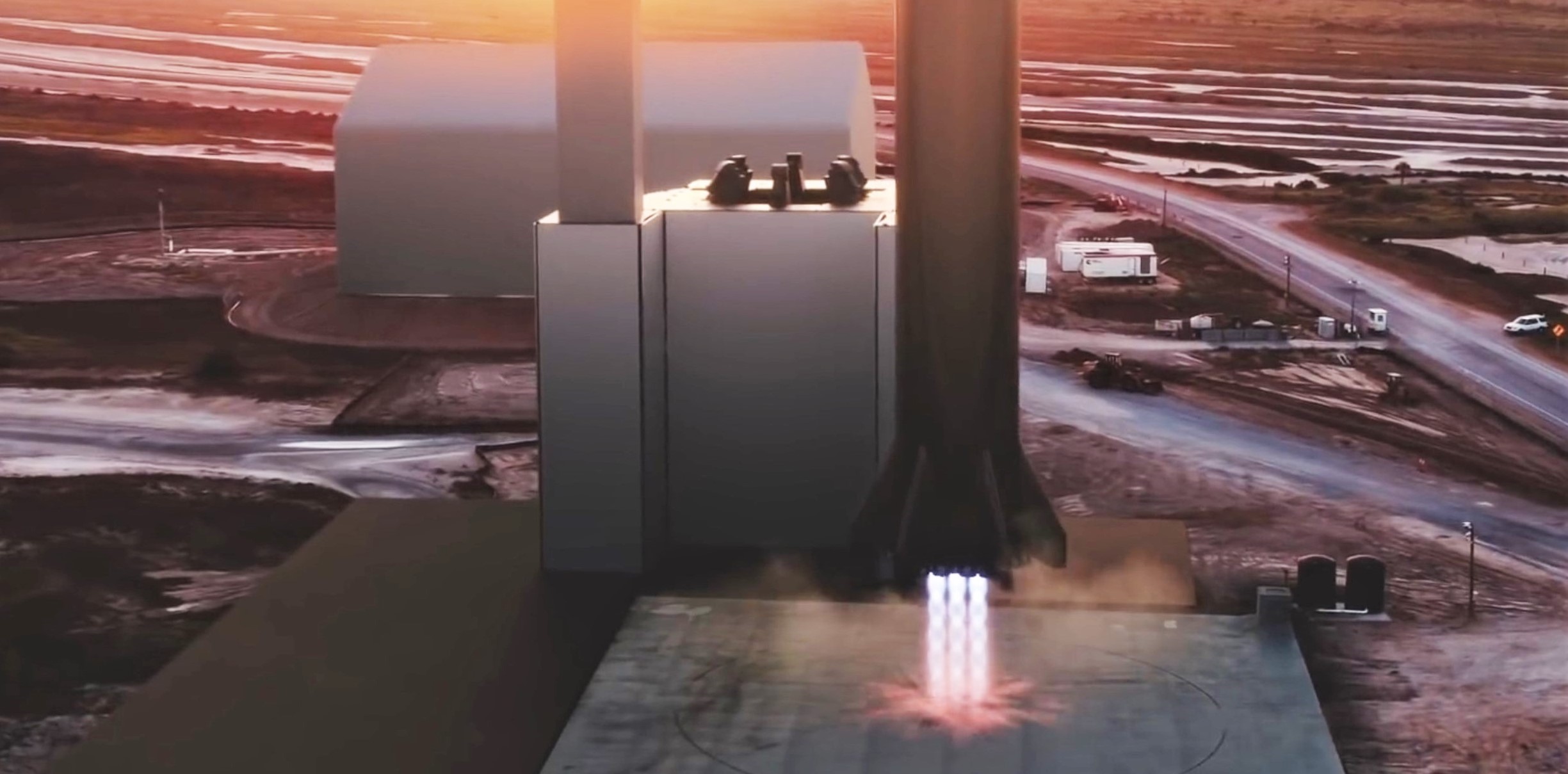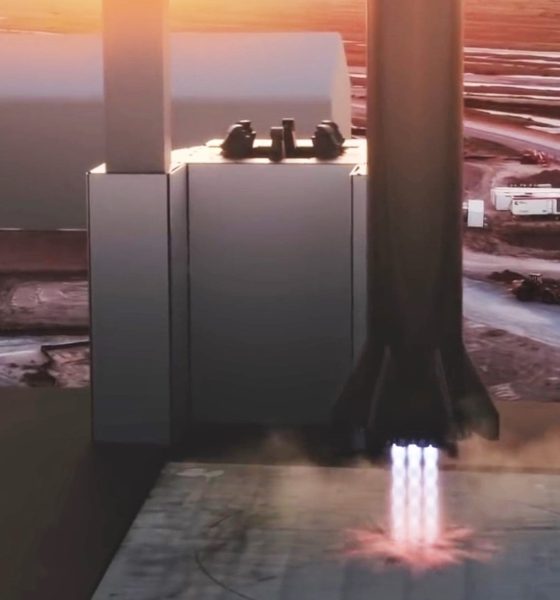Over the last few weeks, SpaceX’s Florida Starship launch pad construction has made some major progress and the structure that will one day support the first East Coast Starship and Super Heavy flight tests have grown several stories tall and show no signs of slowing down.
In a bid to make what could otherwise be an extremely expensive and time-consuming ordeal much faster and cheaper, SpaceX’s Starship/Super Heavy launch pads will be quite a bit different from the company’s several existing launch pads. This includes Kennedy Space Center’s LC-39A pad, leased and operated by SpaceX for Falcon Heavy and Crew Dragon missions and formerly used for dozens of Space Shuttle launches and all Saturn V Apollo Moon missions.
In a very on-brand move, SpaceX has decided to build Starship’s East Coast orbital pad within the bounds of Pad 39A but without using the pad’s existing launch mount or concrete flame trench. Instead, SpaceX is building a separate steel mount and water-cooled thruster diverter designed to stand up to the fury of a Super Heavy booster without allowing the rocket’s plume to dig a crater in the ground after ever ignition.
While choosing to pursue a dramatically different launch pad design for Starship may at first glance seem risky, SpaceX actually has more than a decade of experience building and operating similar mount and flame diverter setups at its McGregor, Texas rocket development and test facilities. A step further, NASA itself once heavily relied on similar technologies and strategies to rapidly build, test, and fly rockets larger than anything that came before them.
Most notably, the Saturn I rocket that preceded the massive Saturn V used a launch mount and flame diverter that looks quite similar to a conceptual setup SpaceX recently showed off in an updated Starship launch render.
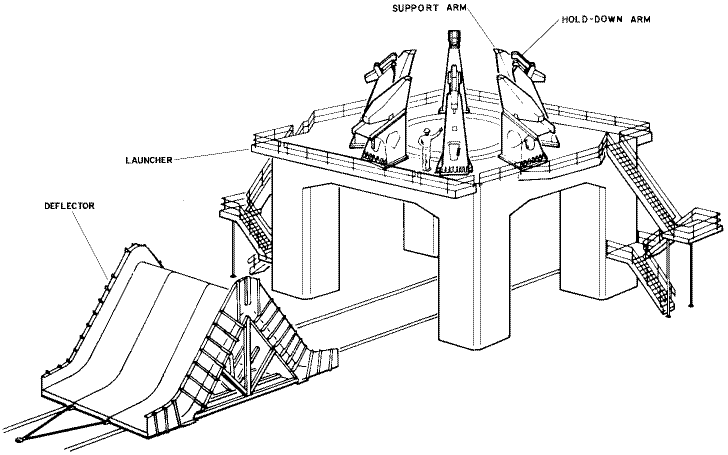
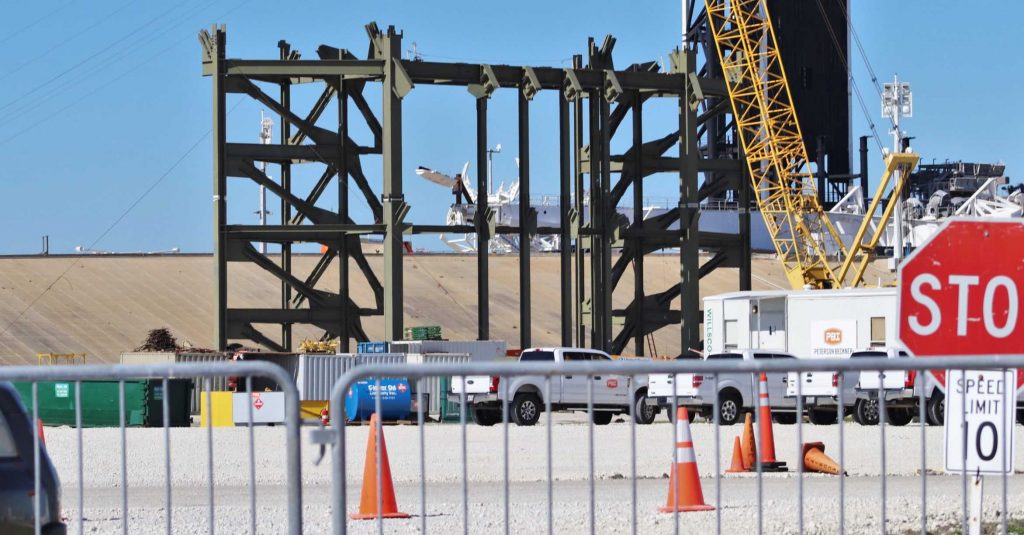
SpaceX’s Starship mount is substantially taller, has gone with steel instead of reinforced concrete, and will have a fixed flame deflector, but the similarities are otherwise significant. Conceptually, both mounts are topped with a flat surface with numerous support arms and a large cutout for the rocket to sit atop and its exhaust to exit through. Similar to Falcon 9, the single-core Super Heavy booster mount shown in SpaceX renders will likely have four hold-down clamps and two tail service masts (TSMs), umbilical connections that supply the rocket with propellant, electricity, connectivity, and any other required fluids.
As described and pictured above, Starship’s Pad 39A launch mount has rapidly grown from a few metal beams into a major structure in just the last few weeks. By rough estimate, the existing mount is already 20 or so meters (70+ ft) tall and has large mounts for the installation of additional structures on top of it, while the conceptual mount shown in SpaceX renders appears to be about 25-30 m (80-100 ft) tall.
In the last few days, technicians have begun installing the first framework of the flame diverter SpaceX will use to prevent Starship from damaging itself or its surroundings during static fires and launches. Given the fact that Starship’s Super Heavy booster – as currently described – will be the single most powerful launch vehicle in history, such a vast amount of energy is not easy to dissipate. To accomplish that task, SpaceX revealed in August 2019 planning documents that the 39A diverter would be water-cooled.
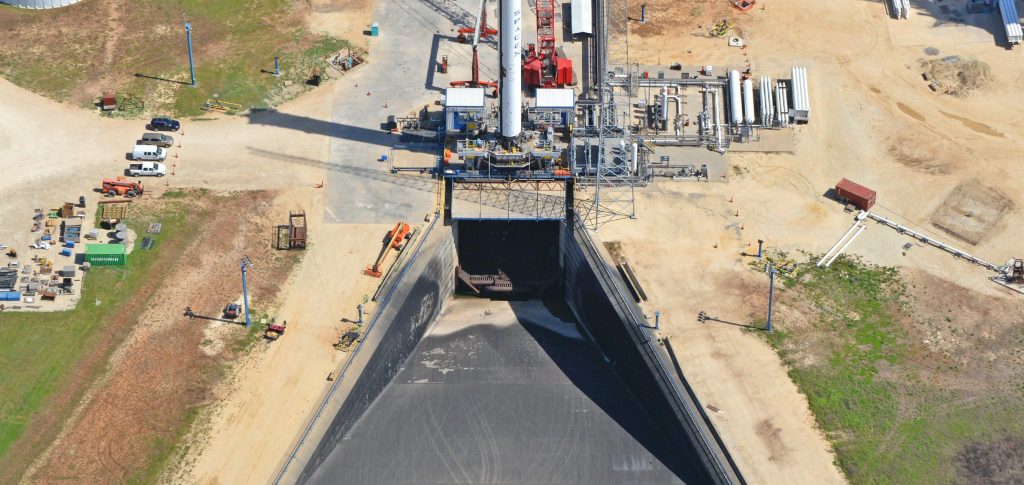
The largest thrust diverter SpaceX has built supports the company’s McGregor, Texas booster test stand and has supported dozens upon dozens of integrated static fire tests. Originally designed to enable integrated triple-booster Falcon Heavy testing, SpaceX ultimately decided not to use that capability but the diverter is still immense, likely measuring at least 15m (50 ft) tall and 10m (33 ft) wide. By building dozens of pipes into the surface and structure of the diverter and filling those pipes with recirculating water, it can survive several minutes of hot rocket exhaust without suffering catastrophic erosion or outright melting.
It’s safe to say that Super Heavy will require a diverter that is far larger still to survive thrust equivalent to more than three Falcon Heavy rockets, but that very diverter and launch mount are already well on their way to completion at SpaceX’s Kennedy Space Center launch pad.
Check out Teslarati’s Marketplace! We offer Tesla accessories, including for the Tesla Cybertruck and Tesla Model 3.

Elon Musk
Elon Musk gives nod to SpaceX’s massive, previously impossible feat
It was the booster’s 30th flight, a scenario that seemed impossible before SpaceX became a dominant force in spaceflight.
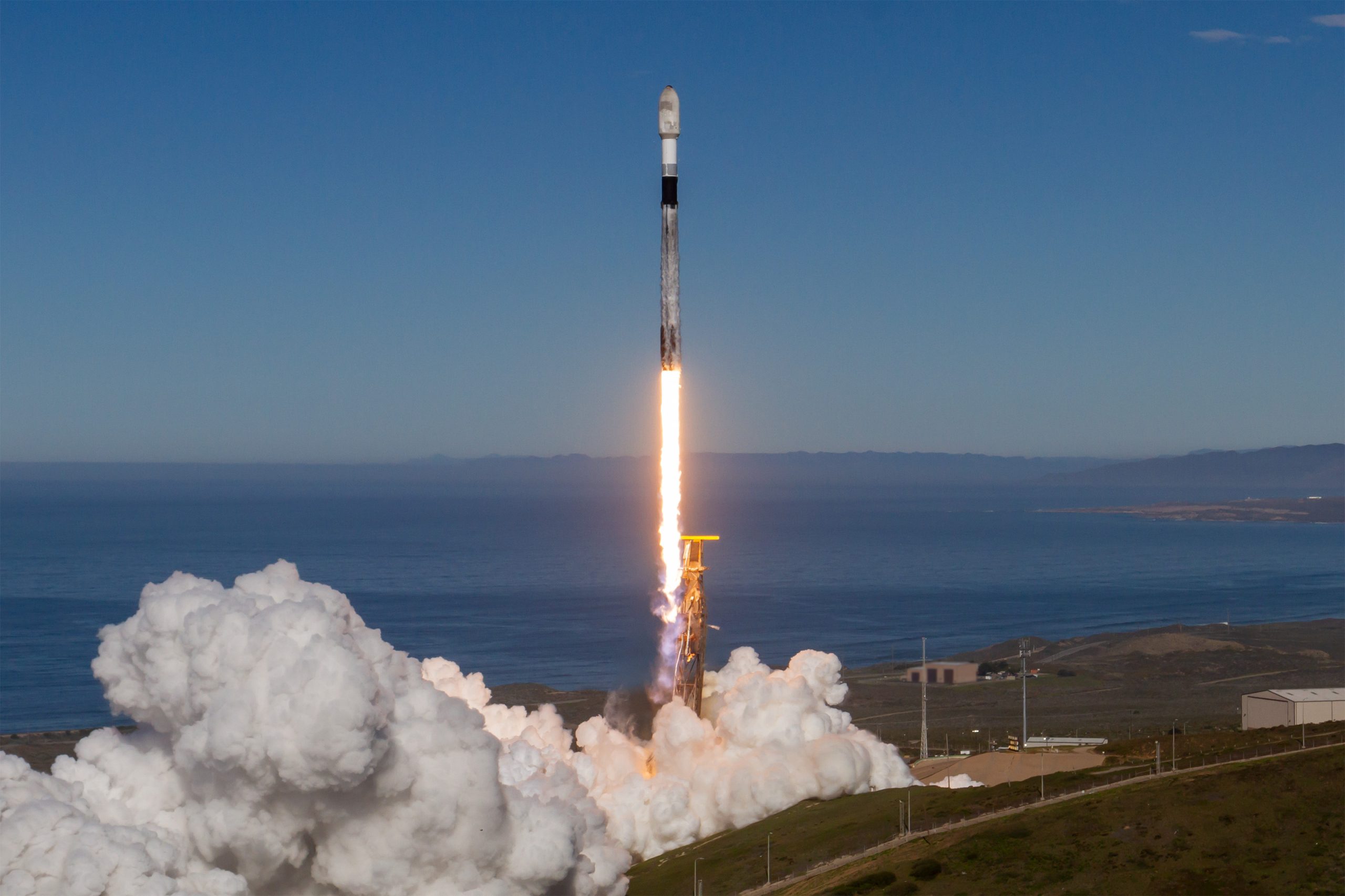
Elon Musk gave a nod to one of SpaceX’s most underrated feats today. Following the successful launch of the Transporter-15 mission, SpaceX seamlessly landed another Falcon 9 booster on a droneship in the middle of the ocean.
It was the booster’s 30th flight, a scenario that seemed impossible before SpaceX became a dominant force in spaceflight.
Elon Musk celebrates a veteran Falcon 9 booster’s feat
SpaceX completed another major milestone for its Smallsat Rideshare program on Friday, successfully launching and deploying 140 spacecraft aboard a Falcon 9 from Vandenberg Space Force Base. The mission, known as Transporter-15, lifted off two days later than planned after a scrub attributed to a ground systems issue, according to SpaceFlight Now. SpaceX confirmed that all payloads designed to separate from the rocket were deployed as planned.
The Falcon 9 used for this flight was booster B1071, one of SpaceX’s most heavily flown rockets. With its 30th mission completed, it becomes the second booster in SpaceX’s fleet to reach that milestone. B1071’s manifest includes five National Reconnaissance Office missions, NASA’s SWOT satellite, and several previous rideshare deployments, among others. Elon Musk celebrated the milestone on X, writing “30 flights of the same rocket!” in his post.
Skeptics once dismissed reusability as unfeasible
While rocket landings are routine for SpaceX today, that was not always the case. Industry veterans previously questioned whether reusable rockets could ever achieve meaningful cost savings or operational reliability, often citing the Space Shuttle’s partial reusability as evidence of failure.
In 2016, Orbital ATK’s Ben Goldberg argued during a panel that even if rockets could be reusable, they do not make a lot of sense. He took issue with Elon Musk’s claims at the time, Ars Technica reported, particularly when the SpaceX founder stated that fuel costs account for just a fraction of launch costs.
Goldberg noted that at most, studies showed only a 30% cost reduction for low-Earth orbit missions by using a reusable rocket. “You’re not going to get 100-fold. These numbers aren’t going to change by an order of magnitude. They’re just not. That’s the state of where we are today,” he said.
Former NASA official Dan Dumbacher, who oversaw the Space Launch System, expressed similar doubts in 2014, implying that if NASA couldn’t make full reusability viable, private firms like SpaceX faced steep odds.
News
Tesla AI and Autopilot VP hints that Robovan will have RV conversions
Tesla’s vice president of AI and Autopilot software, Ashok Elluswamy, hinted at the linitiative in a reply to Y Combinator CEO Garry Tan.
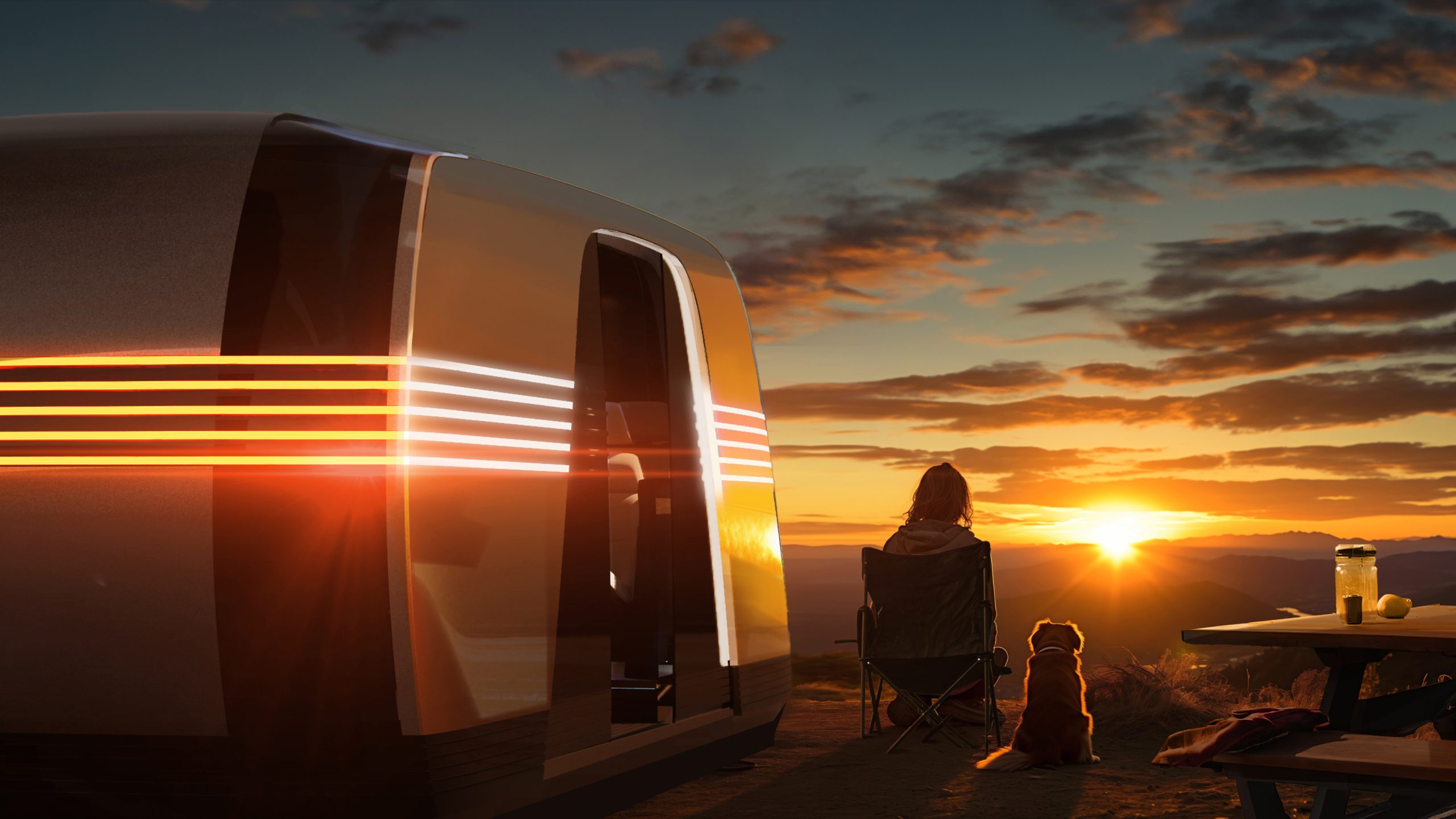
It appears that Tesla is indeed considering an RV in its future pipeline, though the vehicle that would be converted for the purpose would be quite interesting. This is, at least, as per recent comments by a Tesla executive on social media platform X.
Robovan as an RV
Tesla’s vice president of AI and Autopilot software, Ashok Elluswamy, hinted at the linitiative in a reply to Y Combinator CEO Garry Tan, who called for a startup to build RVs with Full Self-Driving capabilities. In his reply, Elluswamy simply stated “On it,” while including a photo of Tesla’s autonomous 20-seat people mover.
Tesla unveiled the Robovan in October 2024 at the “We, Robot” event. The vehicle lacks a steering wheel and features a low floor for spacious interiors. The vehicle, while eclipsed by the Cybercab in news headlines, still captured the imagination of many, as hinted at by X users posting AI-generated images of Robovan RV conversions with beds, kitchens and panoramic windows on social media platforms. One such render by Tesla enthusiast Mark Anthony reached over 300,000 views on X.
Elon Musk on the Robovan
Elon Musk addressed the Robovan’s low profile in October 2024, stating the van uses automatic load-leveling suspension that raises or lowers based on road conditions. The system maintains the futuristic look while handling uneven pavement, Musk wrote on X. The CEO also stated that the Robovan is designed to be very airy inside, which would be great for an RV.
“The view from the inside is one of extreme openness, with visibility in all directions, although it may appear otherwise from the outside. The unusually low ground clearance is achieved by having an automatic load-leveling suspension that raises or lowers, based on smooth or bumpy road conditions,” Musk stated.
Elluswamy’s response on X suggests that Tesla is considering a Robovan RV conversion, though it would be interesting to see how the company will make the vehicle capable of reaching campsites. The Robovan has a very low ground clearance, after all, and campsites tend to be in unpaved areas.
News
Tesla tinkering with Speed Profiles on FSD v14.2.1 has gone too far

Tesla recently released Full Self-Driving (FSD) v14.2.1, its latest version, but the tinkering with Speed Profiles has perhaps gone too far.
We try to keep it as real as possible with Full Self-Driving operation, and we are well aware that with the new versions, some things get better, but others get worse. It is all part of the process with FSD, and refinements are usually available within a week or so.
However, the latest v14.2.1 update has brought out some major complaints with Speed Profiles, at least on my end. It seems the adjustments have gone a tad too far, and there is a sizeable gap between Profiles that are next to one another.
Tesla FSD v14.2.1 first impressions:
✅ Smooth, stress-free highway operation
✅ Speed Profiles are refined — Hurry seems to be limited to 10 MPH over on highways. Switching from Mad Max to Hurry results in an abrupt braking pattern. Nothing of concern but do feel as if Speed…— TESLARATI (@Teslarati) November 29, 2025
The gap is so large that changing between them presents a bit of an unwelcome and drastic reduction in speed, which is perhaps a tad too fast for my liking. Additionally, Speed Profiles seem to have a set Speed Limit offset, which makes it less functional in live traffic situations.
Before I go any further, I’d like to remind everyone reading this that what I am about to write is purely my opinion; it is not right or wrong, or how everyone might feel. I am well aware that driving behaviors are widely subjective; what is acceptable to one might be unacceptable to another.
Speed Profiles are ‘Set’ to a Speed
From what I’ve experienced on v14.2.1, Tesla has chosen to go with somewhat of a preset max speed for each Speed Profile. With ‘Hurry,’ it appears to be 10 MPH over the speed limit, and it will not go even a single MPH faster than that. In a 55 MPH zone, it will only travel 65 MPH. Meanwhile, ‘Standard’ seems to be fixed at between 4-5 MPH over.
This is sort of a tough thing to have fixed, in my opinion. The speed at which the car travels should not be fixed; it should be more dependent on how traffic around it is traveling.
It almost seems as if the Speed Profile chosen should be more of a Behavior Profile. Standard should perform passes only to traffic that is slower than the traffic. If traffic is traveling at 75 MPH in a 65 MPH zone, the car should travel at 75 MPH. It should pass traffic that travels slower than this.
Hurry should be more willing to overtake cars, travel more than 10 MPH over the limit, and act as if someone is in a hurry to get somewhere, hence the name. Setting strict limits on how fast it will travel seems to be a real damper on its capabilities. It did much better in previous versions.
Some Speed Profiles are Too Distant from Others
This is specifically about Hurry and Mad Max, which are neighbors in the Speed Profiles menu. Hurry will only go 10 MPH over the limit, but Mad Max will travel similarly to traffic around it. I’ve seen some people say Mad Max is too slow, but I have not had that opinion when using it.
In a 55 MPH zone during Black Friday and Small Business Saturday, it is not unusual for traffic around me to travel in the low to mid-80s. Mad Max was very suitable for some traffic situations yesterday, especially as cars were traveling very fast. However, sometimes it required me to “gear down” into Hurry, especially as, at times, it would try to pass slower traffic in the right lane, a move I’m not super fond of.
We had some readers also mention this to us:
The abrupt speed reduction when switching to a slower speed profile is definitely an issue that should be improved upon.
— David Klem (@daklem) November 29, 2025
After switching from Mad Max to Hurry, there is a very abrupt drop in speed. It is not violent by any means, but it does shift your body forward, and it seems as if it is a tad drastic and could be refined further.
